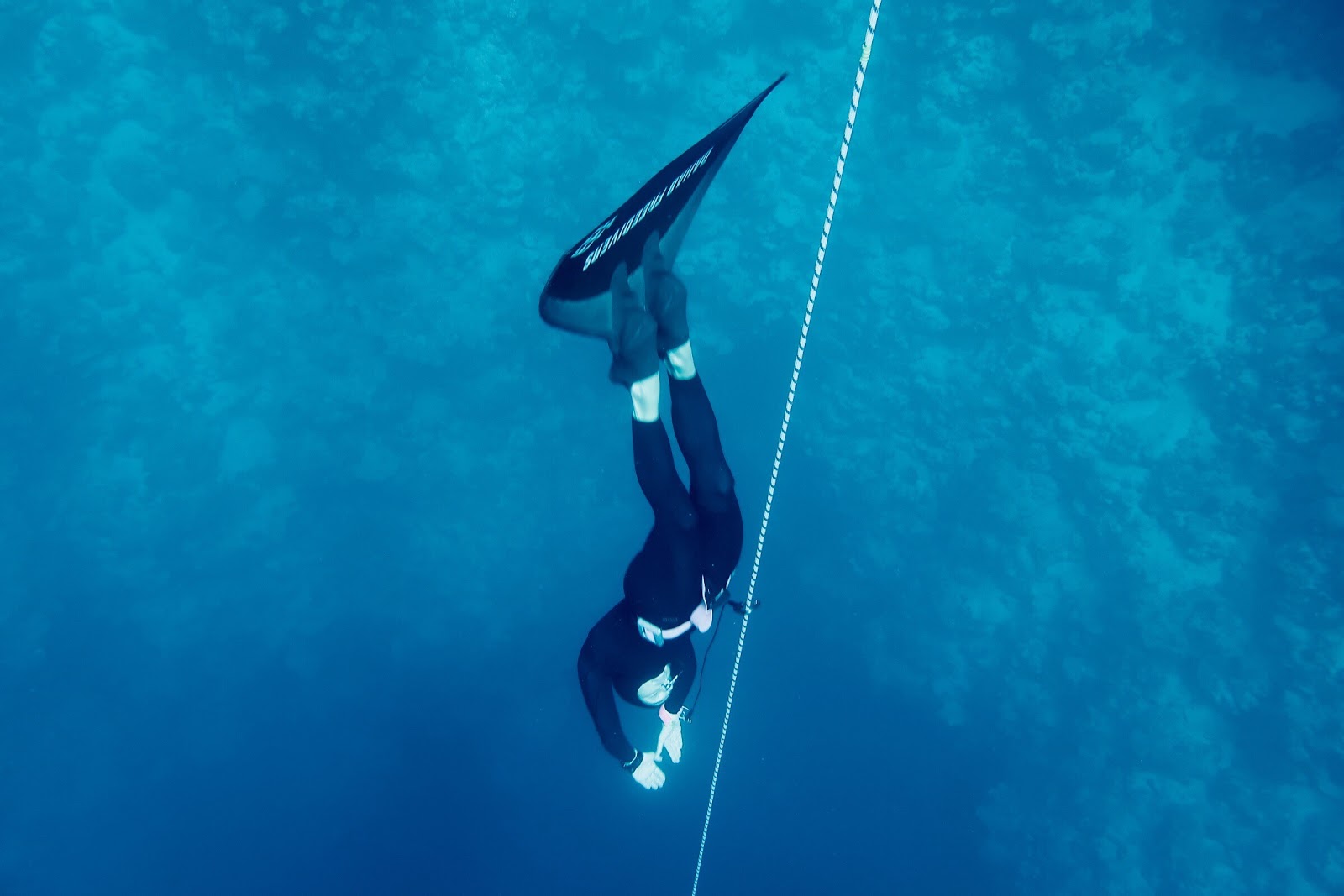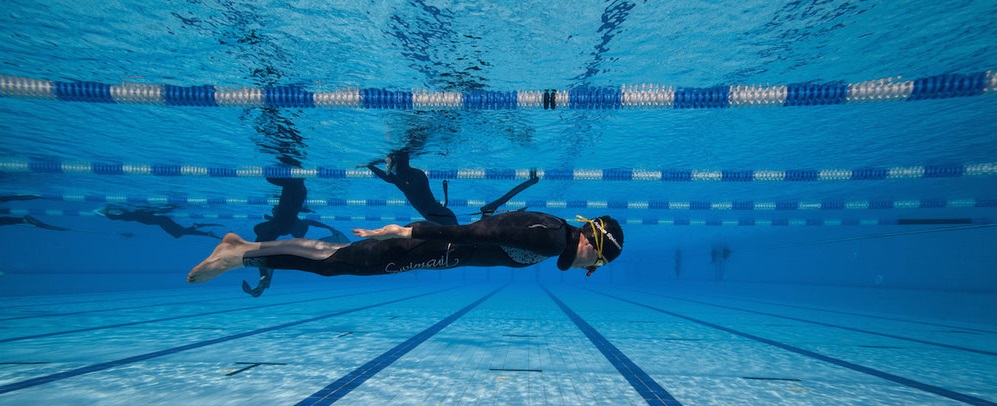Freediving pushes the boundaries of human capability in the aquatic world. It involves divers striving to achieve impressive depths or durations on a breath hold while adhering to strict safety protocols. The sport offers various disciplines, each presenting unique challenges and requiring specific skills. In this article, we will explore the seven different disciplines of freediving.
Constant Weight is the most common discipline in both recreational and competitive freediving. Divers descend and ascend using bi or mono fins and are not allowed to touch the line or drop their weight for the ascent. They rely on their lung capacity and finning techniques to reach incredible depths. This discipline tests both physical endurance and efficient movement in the water.
Current record holders:
Alexey Molchanov (Men) 133m (436ft) 2023
Alessia Zecchini (Women) 123m (403ft) 2023

Constant Weight Without Fins is considered one of the most challenging disciplines freediving. Divers descend and ascend without the use of fins or other propulsion devices, relying solely on their own physical abilities. This discipline demands exceptional strength, efficient technique, and excellent breath-holding ability. This is the most pure form of freediving.
Current record holders:
William Turbridge (Men) 102m (335ft) 2016
Alessia Zecchini (Women) 73m (239ft) 2018
 Image provided by Surassamee Nonruecha (Becky)
Image provided by Surassamee Nonruecha (Becky)
Free Immersion involves divers using a vertical rope to descend and ascend, pulling themselves hand over hand without the use of fins. The diver’s body remains in contact with the rope throughout the entire dive. Free Immersion allows for efficient movement and conserves energy during the dive. It requires efficient pulling techniques. New divers can benefit from this discipline as it is the most controlled and allows for easier equalization.
Current record holders:
Petar Klovar (Men) 128m (420ft) 2023
Alessia Zecchini (Women) 98m (321m) 2019

Dynamic Apnea measures the horizontal distance covered underwater on a single breath, either with a monofin (DYN) or with bi-fins (DYNB). This is also done without fins (DNF). Dynamic apnea tests the diver’s swimming efficiency, technique, and breath-holding capacity while in motion.
Current record holders:
DYN – Guillaume Bourdila (Men) 301m (987ft) 2022
DNF Mateusz Malina (Men) 250m (820ft) 2022
DYN Magdalena Solich-Talanda (Women) 277m (908ft) 2022
DNF Julia Kozerska (Women) 213m (699ft) 2023
Dynamic APNEA Training techniques
Static apnea focuses on breath-holding time rather than depth. In this freediving discipline, divers lie face-down in the water without moving, holding their breath for as long as possible. The diver’s body remains stationary during the attempt, testing their mental fortitude, relaxation techniques, and breath-holding capacity.
Current record holders:
Branko Petrović (Men) 11:35 2019
Natalia Molchanova (Women) 9:02 2013

This discipline allows divers to use a weighted sled attached to a vertical rope or cable to descend to great depths and then ascend by swimming or pulling themselves to the surface. The use of equipment facilitates deeper dives while minimizing the effort required for decent. This discipline tests the diver’s ability to equalize rapidly and adapt to changing buoyancy and perform effectively with added equipment. This can be more risky because divers can quickly descend deeper than they can ascend from and is therefore not competitive discipline nor is it taught in the PADI system.
Current record holders:
Alexey Molchanov (Men) 156m (511ft) 2023
Nanja Van Den Broek (Women) 130m (427ft) 2015
No Limits is generally the deepest discipline where divers use a weighted sled to descend and then ascend using a lift bag or other inflatable device. It allows for the greatest depth potential but requires careful planning and safety measures as it is highly risky. This is also not sanctioned in competitions nor is it taught in the PADI system.
Current record holders:
Herbert Nitsch (Men) 214m (702ft) 2007
Tanya Streeter (Women) 160m (526ft) 2002
The PADI Freediver course covers all but the last two of these disciplines, allowing new freedivers to experiment and determine which technique is best for their diving style.
Each discipline has its own set of world records, which showcase the incredible achievements of competitive freedivers. These records are constantly evolving as divers continue to push the limits of human potential in the underwater world. It’s important to note that while competitive and recreational freediving offers thrilling challenges, safety should always be a top priority, and proper training and supervision are essential for anyone wishing to engage in these disciplines.
LEARN MORE ABOUT THE PADI FREEDIVER COURSEs
Share This